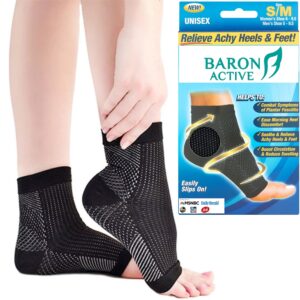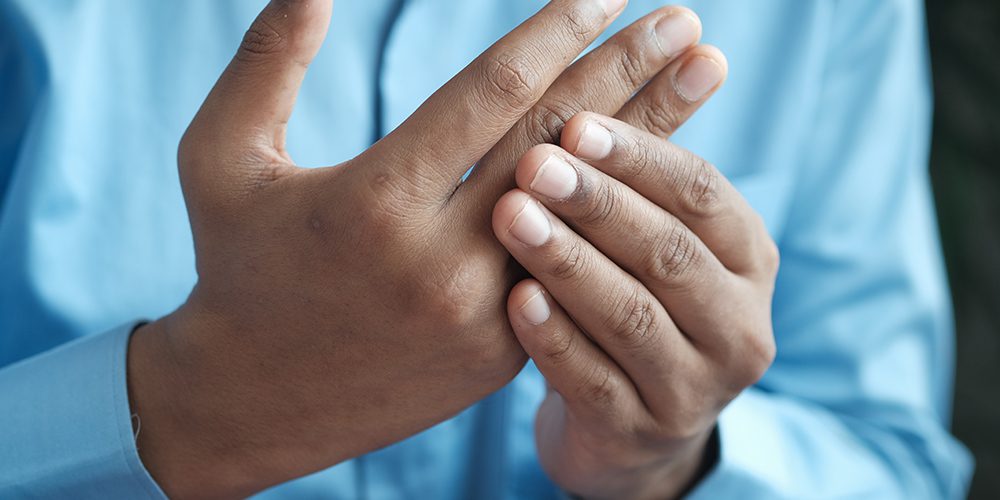Lower back pain affects 50% of people in the United States every year, making it one of the most prevalent reasons that individuals visit their doctors. The most typical age group for people to report lower back pain is between the ages of 25 and 45. Not only do individuals spend money treating their back discomfort, but it can also result in missed income due to absence from work and decreased efficiency.
Back support belts are one method of treating back pain. A back support belt is a kind of belt that is worn around the lower back area to help support the lumbar section of the spine. Back support belts are designed to help you maintain an upright posture by limiting the excessive strain on the spine, stiffening it, and increasing abdominal pressure. But do back support belts really work? Find out whether back support belts are worth your money in this article.
Is it good to wear a back support belt?
Back braces, according to a study published in 2018, can help reduce back discomfort in the long run. The participants wore a back brace for 3 months while the researchers discovered that the back brace stabilized the muscles along the spine, decreasing back pain.
Back braces may be beneficial for people who are undergoing a colonoscopy, according to a 2019 study. The researchers point out that using this gadget compresses the abdomen, making it easier to insert the scope during a colonoscopy. As a result, endoscopists may find performing the procedure quicker, lowering the time required.
Back support belts help with the following conditions:
- Post-operative healing. Especially after surgery in the lumbar spine, wearing a back support belt for around 6 weeks can help in the healing process.
- Osteoarthritis. A back support belt can help reduce the pain from osteoarthritis in the lumbar spine.
- Spondylitis. A study published in 2017 found that wearing a back support belt can help reduce symptoms of spondylitis, such as pain and fatigue.
- Bulging disks. A bulging disk is when the cushion between your vertebrae (bones) is pushed out; this condition may cause pressure to be placed on your spinal cord and/or nerves, causing severe pain. Wearing a back support belt can help alleviate this condition by taking some of the pressure off the disks.
- Muscle strains. Wearing a back support belt may help relieve the pain associated with a muscle strain. For example, if one of your muscles that supports and stabilizes the spine is strained, wearing a back support belt can keep you from moving as much, thereby preventing further injury.
- Lower back pain after pregnancy. Wearing a back support belt may help heal lower back pain after pregnancy.
- Herniated discs. A herniated disk is when the cushion between your vertebrae pushes out, pressing on your spinal cord and/or nerves, causing severe pain. Wearing a back support belt can prevent herniation by supporting the lower spine.
- Vertebral compression fractures. Wearing a back support belt can help take pressure off, or distribute weight more evenly over, the spine so that it is not being weighed down by gravity alone.
- Kyphosis. Kyphosis is the medical term for an abnormally rounded upper back, often referred to as a hunchback. If you have kyphosis, wearing a back support belt may help by strengthening your back muscles and decreasing excess strain on the spine.
- Scoliosis. Scoliosis is when the spine has a curve that looks like the shape of the letter “C”. If you have scoliosis, wearing a back support belt can help reduce your pain and, in some cases, keep you from hurting yourself further.
How does a lumbar belt work?
The drawbacks of back discomfort, such as disc restriction and joint and muscle restrictions, can be alleviated by impact components. Bending forward may cause disc pressure to build up, whereas bending backward may irritate facet joints. Back pain can occur when both of these structures are affected, causing discomfort that spreads into the lower limb. The abdominal pressure is increased without strain, as the bracing helps to minimize disc compression and allows daily and work activities with less force on sensitive regions. Maintaining a neutral spine position can help protect against slouching and other posture-related problems. Achieving good posture may be difficult, which is why maintaining the spinal column within normal limits might result in an educational outcome. Mechanical belts can restrict postures that are harmful to the spine, therefore aiding in spinal column stability.
Braces are frequently used in conjunction with chronic pain, especially overuse injuries. In cases where rest and rehabilitation therapy are either insufficient or impossible, optimal stabilization using mechanical or elastic support can assist. Stability is a property that provides additional support to damaged tissues. A lower back muscle strain, for example, might cause the suspensory ligaments that support the spine and pelvis to become weak. Back support belts with extra ergonomic force can aid in the strengthening of weakened ligaments.
Stabilization of joints is the basic concept of back support belts, however, muscle receptors are likewise activated. The materials provide controlled compression with panel inserts and massage provided by pads that are built into the support, which aids in inflammation reduction. A back support may be used for a variety of purposes, such as providing relief, stabilization, immobilization, mobilization, and rehabilitation. The back can be immobilized and then mobilized in a controlled manner. They may also be utilized to correct posture.
The mechanisms of pain relief are achieved by the following general features of back support belts:
- Additional spinal support. A back brace can help a person who has a weak or injured spine stay stable when their low back is unstable due to the condition. A back brace may assist create a healthy healing environment for the current injury and prevent additional ones by maintaining the body in a safe, supportive posture.
- Reduced pressure on the spinal structure. A back brace can help relieve some of the pressure that builds up on your lower back while also reducing strain on the spine’s joints, discs, and muscles. A back brace may help to reduce painful muscular tightness that develops as a result of spinal compression.
- Reduced range of motion. A back brace is used to prevent or limit excruciating movements, such as twisting the spine or bending forward, backward, or sideways. Limiting harmful motions and postures can also help increase body awareness (proprioception), which allows the user to control posture for better back health.
- Micro-motion reduction between vertebral segments. Braces also limit micro-movements at a specific spinal segment or vertebral fracture, which reduces discomfort from muscular tension and inflamed joints or nerve roots.
Do back support belt helps posture?
The short answer is yes, they do help. But only as side effects. The main reason to wear a lumbar support belt is still to stabilize your back, to relieve pain and to reduce the pressure on your spine. As a side effect, your overall posture gets better. However, if you don’t need pain relief or stabilization, there are much better alternatives to improve your posture.
There are specific posture corrector belts and we have one of them available in our store. If you need a brace that only corrects your posture, please have a look at our Pro Posture Corrector Belt. This may be what you’re looking for.
Should I sleep with a back support belt on?
This depends on the type of back brace. Generally speaking, you can wear neoprene back support belts 24/7 if you need to. If you feel back pain during the night, just try wearing your back brace and see if it reduces the pain. On the other hand, if you’re feeling uncomfortable with your back support belt on, try sleeping without it and put it on in the morning after waking up. This is totally up to you. When in doubt, please speak to your doctor and see what he or she advises you to do.
Is it OK to wear a back brace all day?
Your doctor will instruct you on how to put on your brace. It’s critical that you wear your brace properly so it works as intended. Some braces, such as those for fractures, must be worn 24 hours a day, seven days a week. However, it is typical to remove a brace for brief intervals to bathe or allow the skin to breathe.
The majority of patients are satisfied with their brace, although they may be uncomfortable at first. Your doctor may advise you to follow a timetable for wearing your brace until you become accustomed to how it feels. For example, a kid who has scoliosis might wear the brace for two hours on the first day and throughout the week, the wearing time can be increased bit by bit.
How to wear a back support belt
A back support belt should be draped around the waist and pulled in firmly. You should feel as if you are being lifted out of your core when you wear one.
Back support belts help to strengthen back muscles and tendons by assisting with exercise or manual labor for long periods of time. Bodybuilders frequently use them, but they may be found in any profession.
Lower back support belts can be worn lower towards the hips. These types of lower back supports are intended to help support your entire lumbar region.
People who sit for long periods of time or have sciatica appreciate the advantages of this type of back support. Back supports will protect the spine. They’re fantastic to wear if you’ve had an automobile accident and have unexplained lower back discomfort.
Do you have to take them off when you exercise? You can certainly wear them while exercising. If you suffer from repeated bouts of sciatica, lower back support belts will aid in the protection and correction of your back while exercising.
Here are the 7 most important steps to wearing a lumbar back support belt properly:
- Make sure you get the appropriate size when utilizing a lumbar support belt. To determine the correct size, measure around your low back area. If you have a big midsection, go up at least one size to be comfortable.
- If your lumbar belt has two side flaps that Velcro to the belt, remove them from the velcro and park them at the edge of the belt in the finishing steps to make it more secure.
- There’s a flap in the back of the belt that informs you where the belt’s center is. Place this tag or marker on your lower back at the spot marked S. Make sure your side seams are parallel to your pant seams.
- Make sure the belt extends to cover the lumbar (low back) and sacral (tail bone) regions.
- Before slipping on the belt, make sure not to suck in your stomach all the way and not to allow your midsection (belly) to hang out all of the way. Begin with a neutral posture in which you are comfortable.
- Wrap the belt around in a clockwise manner. Make sure the two surfaces are correctly aligned and that you have a solid base of overlap when velcroing the first part of the belt. You don’t want to end up with a criss-cross pattern, as this will cause your belt to ride up and not stay in position.
- If your belt has extra support flaps that you parked in step 2, use them to provide additional support around your waist and fully velcro them.
How to care for your back support belt
The majority of back braces should be cleaned in the same manner. The instructions for cleaning your back brace should come with it, and you should follow them carefully. The vast majority of braces, however, are not meant to be machine washed or dried. Taking care of your brace is simple and does not take much time. Here are some pointers to keep your brace in good condition:
- Daily Cleaning With Water and Soap. Cleaning your brace on a daily basis will keep it dust-free, odorless, and bacteria-free. To clean your back brace, remove any panels or padding and clean all components individually with water and mild soap by hand. Do not put bleach or harsh detergents on your brace. Before putting it back on, make sure your brace is completely dry.
- Check your brace for wear. Over time, the straps of a back brace tend to wear. Check your brace for frayed straps or holes on a regular basis and let your doctor know right away if any of the parts need replacing. The straps should be simple to replace.
- Use rubbing alcohol. Rubbing alcohol is an easy way to clean the brace and prevent germs from growing because it removes soap residue. Wipe down your brace with a cotton ball dampened with rubbing alcohol.. Every day, if your brace has a foam lining, such as a Boston brace, wipe it down with rubbing alcohol. Because rubbing alcohol evaporates quickly, you won’t have to wait long to resume wearing your brace.
Additional tips that make wearing a back support brace easier
Wearing a back support brace or belt and be exhausting at times. And while the benefits of wearing your brace overweigh the downsides, here are some tips that make your life with a back brace easier.
- Ask for help when it’s difficult to wear the brace. Although some braces are difficult to put on or remove without assistance, especially if you have back trouble. If possible, enlist the aid of a friend or family member to assist you with your brace. If you don’t have anyone to assist you, you can fasten the brace yourself without straining your back by sitting in a chair with the wings open. Sit down with the wings on either side of your body and then stand up while holding them in place. This method allows you to avoid reaching behind you.
- Wear a shirt underneath. To avoid skin irritation, you may want to choose a clean, tight-fitting shirt to wear under the brace. 100% cotton shirts are the ones you want to choose and make sure that there are no wrinkles in your shirt.
- Use rubbing alcohol from time to time. The brace will cause your skin to toughen where it applies the most pressure. Rubbing alcohol may assist in the development of your skin and minimize irritation and breakage. The treatment is simple and inexpensive: all you need to do is apply rubbing alcohol to the region of skin where the brace comes into contact. You’ll only need to use rubbing alcohol for a few weeks until your skin toughens.
- Don’t wear skin lotion. The skin beneath the brace should be kept as dry as possible. Too much moisture can cause discomfort and sores. As a result, avoid using lotions, oils, or powders on your skin surrounding the brace. During hot weather, you may dust cornstarch over your skin to absorb excess moisture or if you are allergic to rubbing alcohol.
- Clean skin helps. Because a back brace is meant to be tight, you may notice red areas where it applies pressure. However, ensuring that your skin is clean can help prevent blisters or raw skin beneath the brace.
- Loose clothing makes the brace invisible. Back braces are often simple to conceal beneath clothing. You may still maintain your personal style while wearing your brace, although looser apparel is typically more practical.
- Keep your head up. Keep in mind that your brace is intended to improve your health and quality of life. Also, keep in mind that you have a lot of assistance available to help you get through it. You are not alone when it comes to back problems. In their lives, the majority of Americans will be afflicted with back pain at some time or another.
Takeaways
For some people, back pain will be a temporary condition. For others, it will be an ongoing problem that comes and goes. No matter who you are or what you’ve been through, wearing a back brace can help ensure that your future is healthier and better than your past.
I hope that you found this article helpful. Our community can benefit from your insights, stories and experiences about how you are or were dealing with your back pain. So please don’t hesitate to comment. Your opinion means a lot to us!
























One Response
i just bought the belt, how does it turn on without batteries, I cant even tell if it is working or not. I do not feel anything happening.